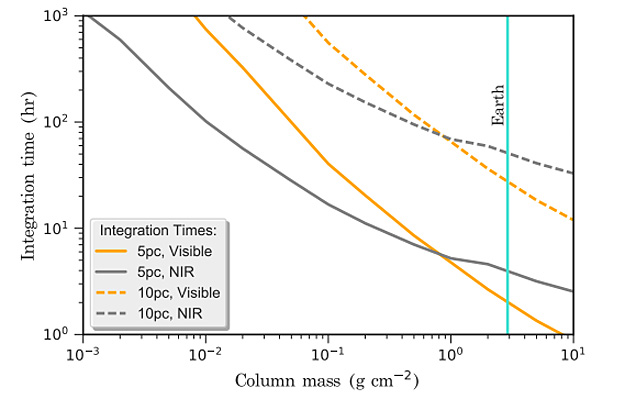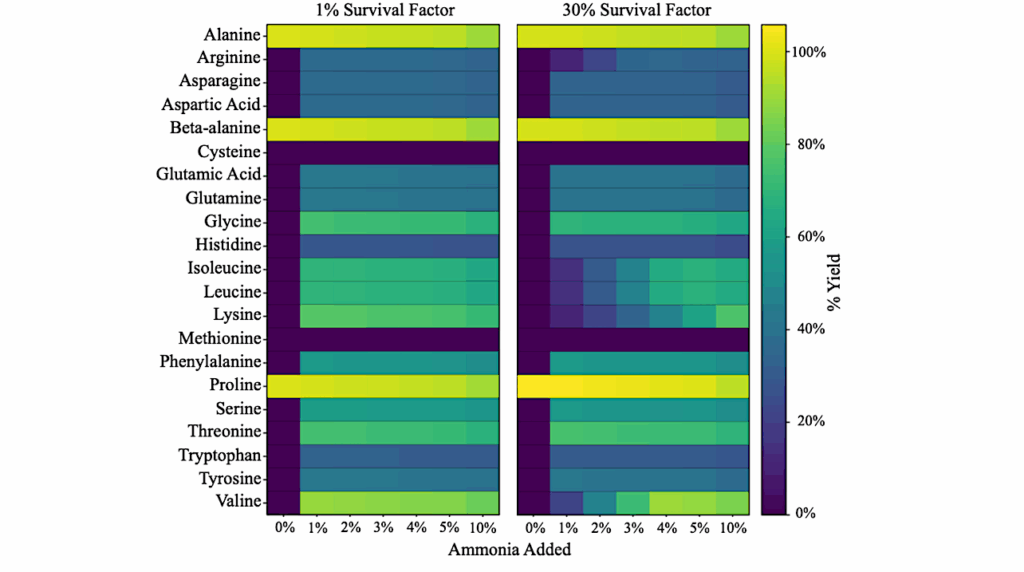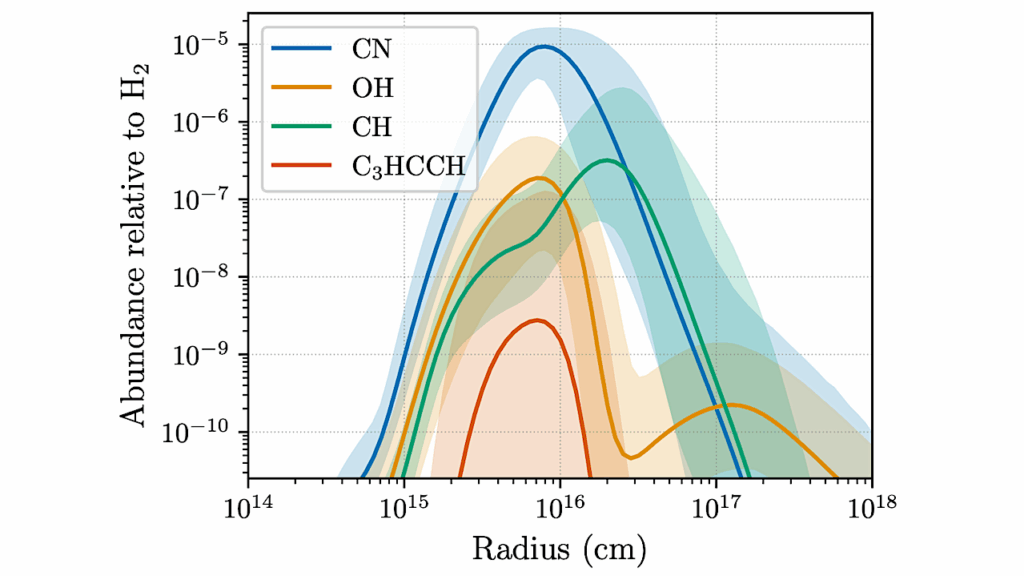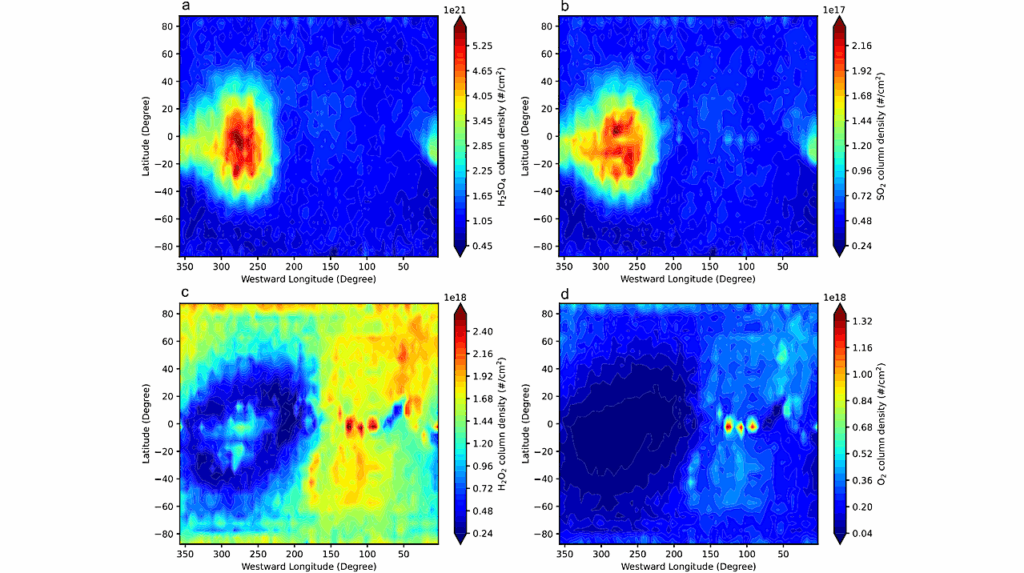Simulated Direct Imaging Detection of Water Vapor For Exo-Earths

Habitable planets are often defined as terrestrial worlds capable of maintaining surface liquid water. As a result, atmospheric water vapor can be a critical indicator of habitability. Thus, habitability-themed exoplanet investigations emphasize detection of water vapor signatures for their targets.
A variety of concept missions for exoplanet direct imaging in reflected light have seen recent study, including the HabEx and LUVOIR concepts. Here, it is important to understand how direct imaging in reflected light — coupled with moderate-resolution spectroscopy — could be used to detect various water vapor amounts in Earth-like exoplanetary atmospheres.
To investigate water vapor detection for terrestrial exoplanets, we generated reflectance spectra over a grid of water vapor column masses and used an instrument model to explore requisite integration times for spectral feature detection at either visible or near-infrared wavelengths. Lower-resolution near-infrared spectroscopy is generally optimal for detecting water vapor in the atmospheres of Earth-like exoplanets when using direct imaging in reflected light. This holds true for dry or cold terrestrial planets, whose atmospheres would contain relatively little water vapor.
Atmospheres richer in water vapor, such as planets undergoing a moist or runaway greenhouse, could have water vapor efficiently detected at visible wavelengths. Understanding details like an exoplanet’s size, temperature, and location relative to the habitable zone can aid in determining appropriate wavelength ranges for atmospheric characterization. Overall, water vapor detection for Earth-like exoplanets is quite feasible for future direct imaging missions.
Anna Sage Ross, Tyler D. Robinson
(Submitted on 4 Dec 2019)
Comments: 2.5 pages, 1 figure, Research Notes of the AAS
Subjects: Earth and Planetary Astrophysics (astro-ph.EP); Instrumentation and Methods for Astrophysics (astro-ph.IM)
Journal reference: Res. Notes AAS 3, 177, 2019
DOI: 10.3847/2515-5172/ab5964
Cite as: arXiv:1912.02228 [astro-ph.EP] (or arXiv:1912.02228v1 [astro-ph.EP] for this version)
Submission history
From: Anna Ross
[v1] Wed, 4 Dec 2019 19:56:53 UTC (91 KB)
https://arxiv.org/abs/1912.02228
Astrobiology








